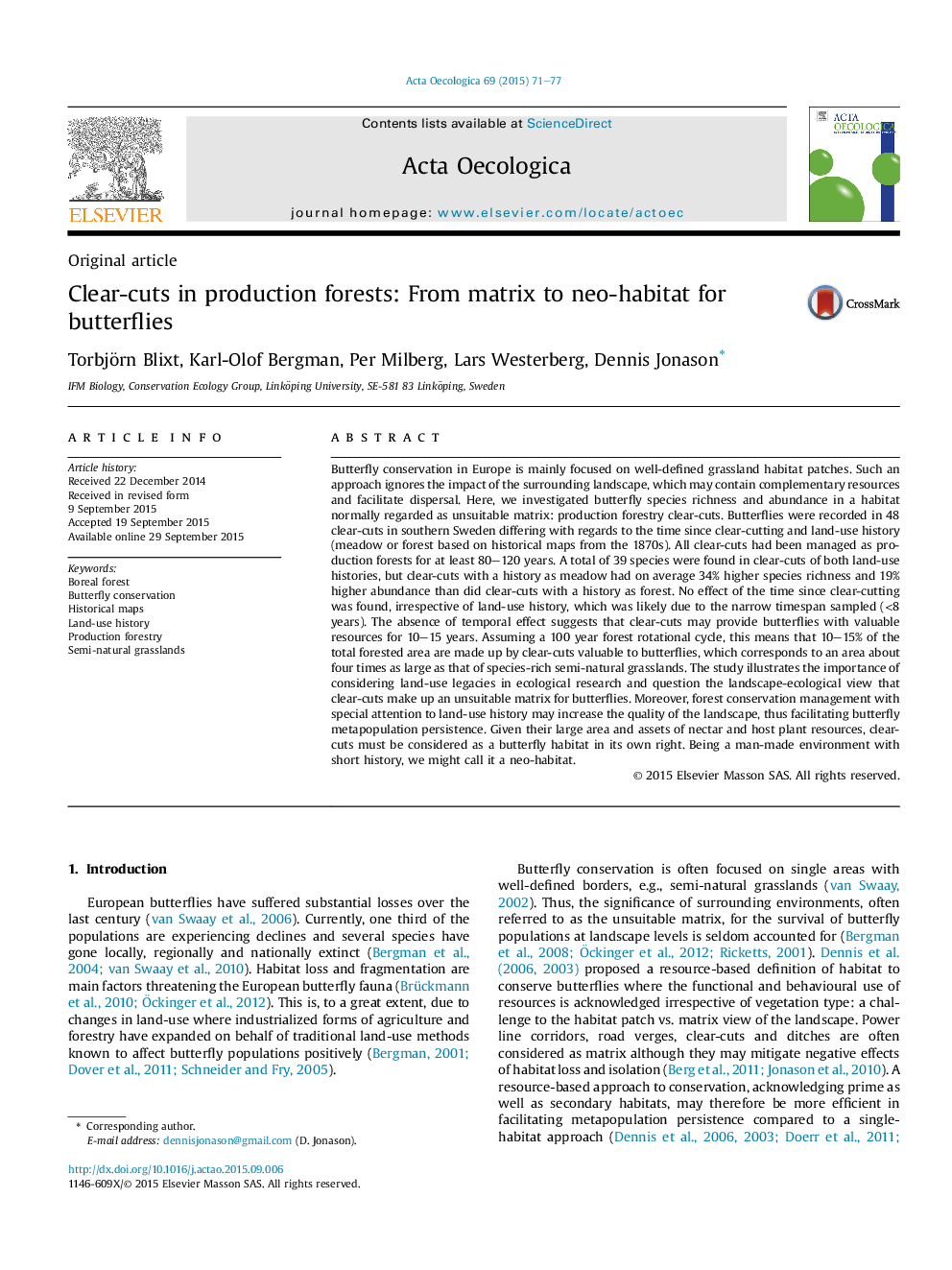| Article ID | Journal | Published Year | Pages | File Type |
|---|---|---|---|---|
| 4380642 | Acta Oecologica | 2015 | 7 Pages |
•Effects of land-use history on clear-cut butterflies were tested.•The clear-cuts differed in respect to land-use in the 1870s (meadow vs. forest).•Meadow history resulted in 34% higher richness and 19% higher abundance.•Effects lasted more than 8 years after clear-cutting.•Clear-cuts should not be considered as matrix for butterflies.
Butterfly conservation in Europe is mainly focused on well-defined grassland habitat patches. Such an approach ignores the impact of the surrounding landscape, which may contain complementary resources and facilitate dispersal. Here, we investigated butterfly species richness and abundance in a habitat normally regarded as unsuitable matrix: production forestry clear-cuts. Butterflies were recorded in 48 clear-cuts in southern Sweden differing with regards to the time since clear-cutting and land-use history (meadow or forest based on historical maps from the 1870s). All clear-cuts had been managed as production forests for at least 80–120 years. A total of 39 species were found in clear-cuts of both land-use histories, but clear-cuts with a history as meadow had on average 34% higher species richness and 19% higher abundance than did clear-cuts with a history as forest. No effect of the time since clear-cutting was found, irrespective of land-use history, which was likely due to the narrow timespan sampled (<8 years). The absence of temporal effect suggests that clear-cuts may provide butterflies with valuable resources for 10–15 years. Assuming a 100 year forest rotational cycle, this means that 10–15% of the total forested area are made up by clear-cuts valuable to butterflies, which corresponds to an area about four times as large as that of species-rich semi-natural grasslands. The study illustrates the importance of considering land-use legacies in ecological research and question the landscape-ecological view that clear-cuts make up an unsuitable matrix for butterflies. Moreover, forest conservation management with special attention to land-use history may increase the quality of the landscape, thus facilitating butterfly metapopulation persistence. Given their large area and assets of nectar and host plant resources, clear-cuts must be considered as a butterfly habitat in its own right. Being a man-made environment with short history, we might call it a neo-habitat.
